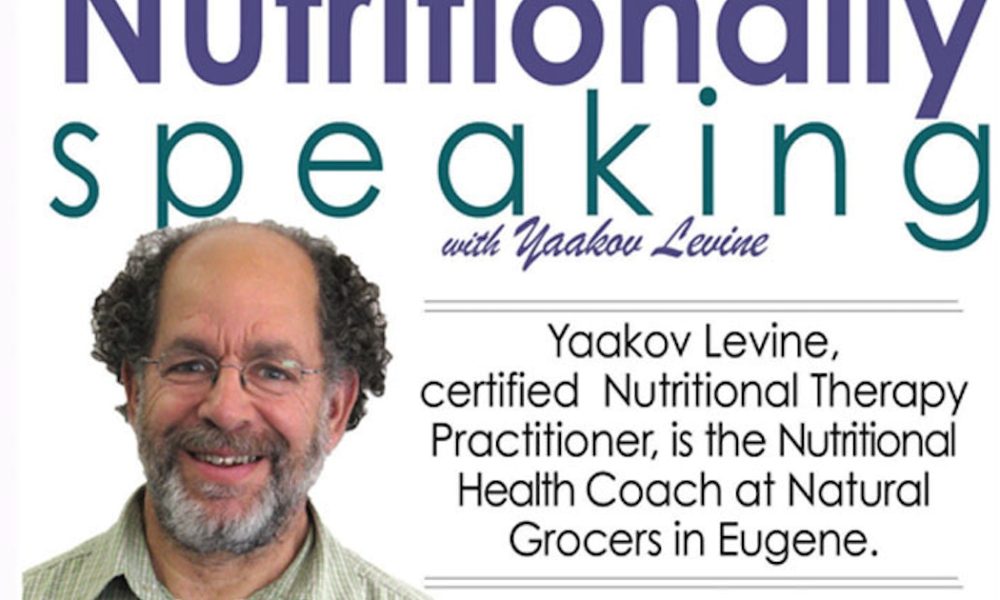
I am asked daily about alternatives to prescription medications for lowering cholesterol levels. I have found this question to be a great lead-in for some education about the benefits (yes, benefits) of cholesterol and the many ways to support healthy cholesterol levels. As I wrote in a recent column, our fat-soluble vitamins, A,D,E and K are critical ingredients for optimal health, and cholesterol is an integral part of the picture.
Our bodies are made up of billions of cells, and each one of them produces cholesterol. If we did not have cholesterol and saturated fats in our cells, we would be like worms or slugs; the cholesterol gives our cells shape and sturdiness, and supports cell membrane fluidity so they can communicate with other cells.
The ability of cholesterol and saturated fats to reinforce tissues is particularly important in our blood vessels, since the blood vessels need to be able to withstand the pressure of the blood being pumped around our bodies. The flow of blood through our medium and larger arteries causes some saturated fats and cholesterol to form a protective layer against damage.
Cholesterol is critical for the brain and eye development of a fetus and newborn baby. About 25% of our body’s cholesterol is in our brain. Human breast milk provides cholesterol, and the enzyme needed to absorb the cholesterol required for development. Infant formulas often brag about their products’ low cholesterol, which deprives infants of a healthy start.
One of our important materials for protecting our nerve cells is called myelin. Myelin is a coating that protects nerves, including those in our brain, and allows for the flow of messages that travel along the nerves. About 20% of myelin is cholesterol. When we interfere with the body’s ability to produce cholesterol, we threaten the nervous system.
One of the side effects of cholesterol-lowering drugs is memory loss. A former NASA flight surgeon, scientist and astronaut Duane Graveline, MD has written a book titled, ”Lipitor: Thief of Memory; Statin Drugs and the Misguided War on Cholesterol.” He writes that he has been able to save his memory by stopping the medication and eating plenty of high-cholesterol foods, including eggs, meat and fish.
Our bodies can produce most of the cholesterol we need. About 85% of our cholesterol is produced in our bodies, and about 15% comes from our food. When we eat foods low in cholesterol, our bodies compensate by producing more. Cholesterol is an important part of our healing process, and studies have found higher levels of cholesterol in our blood after surgeries, injuries and dental work. Where there is cell repair and replacement there will also be cholesterol. If our cholesterol is high, should we be concerned that there may be some disease/damage present and not rush to reduce our cholesterol level without further investigation?
Our cholesterol levels are regulated by our liver. Our liver also produces bile, which is made out of cholesterol. The bile produced in our livers is stored in our gallbladder until we eat some fat. When we eat fat, a signal goes to our gallbladder to expel bile into our small intestine to help with digestion and absorption. After the bile completes its digesting job, about 95% is sent back to the liver to be recycled and used again. Many commonly prescribed cholesterol-lowering drugs list some common side effects on their website, including constipation, headache, upset stomach and diarrhea. These side effects are also signs that here is not enough bile flowing to assist digestion. Without bile we cannot breakdown and absorb our fat soluble vitamins, A, E, D and K.
As always, I am not implying or suggesting that you discontinue any medications as prescribed by your physician. This article is intended as an invitation to educate yourselves, and in doing so achieve greater health. Salud!
Any questions? I can be reached at [email protected].







